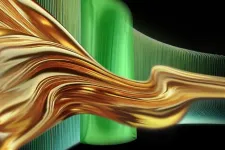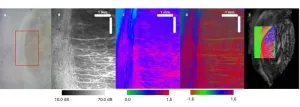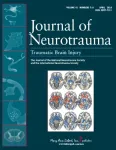Typically, electrons are free agents that can move through most metals in any direction. When they encounter an obstacle, the charged particles experience friction and scatter randomly like colliding billiard balls.
But in certain exotic materials, electrons can appear to flow with single-minded purpose. In these materials, electrons may become locked to the material’s edge and flow in one direction, like ants marching single-file along a blanket’s boundary. In this rare “edge state,” electrons can flow without friction, gliding effortlessly around obstacles as they stick to their perimeter-focused flow. Unlike in a superconductor, where all electrons in a material flow without resistance, the current carried by edge modes occurs only at a material’s boundary.
Now MIT physicists have directly observed edge states in a cloud of ultracold atoms. For the first time, the team has captured images of atoms flowing along a boundary without resistance, even as obstacles are placed in their path. The results, which appear in Nature Physics, could help physicists manipulate electrons to flow without friction in materials that could enable super-efficient, lossless transmission of energy and data.
“You could imagine making little pieces of a suitable material and putting it inside future devices, so electrons could shuttle along the edges and between different parts of your circuit without any loss,” says study co-author Richard Fletcher, assistant professor of physics at MIT. “I would stress though that, for us, the beauty is seeing with your own eyes physics which is absolutely incredible but usually hidden away in materials and unable to be viewed directly.”
The study’s co-authors at MIT include graduate students Ruixiao Yao and Sungjae Chi, former graduate students Biswaroop Mukherjee PhD ’20 and Airlia Shaffer PhD ’23, along with Martin Zwierlein, the Thomas A. Frank Professor of Physics. The co-authors are all members of MIT’s Research Laboratory of Electronics and the MIT-Harvard Center for Ultracold Atoms.
Forever on the edge
Physicists first invoked the idea of edge states to explain a curious phenomenon, known today as the Quantum Hall effect, which scientists first observed in 1980, in experiments with layered materials, where electrons were confined to two dimensions. These experiments were performed in ultracold conditions, and under a magnetic field. When scientists tried to send a current through these materials, they observed that electrons did not flow straight through the material, but instead accumulated on one side, in precise quantum portions.
To try and explain this strange phenomenon, physicists came up with the idea that these Hall currents are carried by edge states. They proposed that, under a magnetic field, electrons in an applied current could be deflected to the edges of a material, where they would flow and accumulate in a way that might explain the initial observations.
“The way charge flows under a magnetic field suggests there must be edge modes,” Fletcher says. “But to actually see them is quite a special thing because these states occur over femtoseconds, and across fractions of a nanometer, which is incredibly difficult to capture.”
Rather than try and catch electrons in an edge state, Fletcher and his colleagues realized they might be able to recreate the same physics in a larger and more observable system. The team has been studying the behavior of ultracold atoms in a carefully designed setup that mimics the physics of electrons under a magnetic field.
“In our setup, the same physics occurs in atoms, but over milliseconds and microns,” Zwierlein explains. “That means that we can take images and watch the atoms crawl essentially forever along the edge of the system.”
A spinning world
In their new study, the team worked with a cloud of about 1 million sodium atoms, which they corralled in a laser-controlled trap, and cooled to nanokelvin temperatures. They then manipulated the trap to spin the atoms around, much like riders on an amusement park Gravitron.
“The trap is trying to pull the atoms inward, but there’s centrifugal force that tries to pull them outward,” Fletcher explains. “The two forces balance each other, so if you’re an atom, you think you’re living in a flat space, even though your world is spinning. There’s also a third force, the Coriolis effect, such that if they try to move in a line, they get deflected. So these massive atoms now behave as if they were electrons living in a magnetic field.”
Into this manufactured reality, the researchers then introduced an “edge,” in the form of a ring of laser light, which formed a circular wall around the spinning atoms. As the team took images of the system, they observed that when the atoms encountered the ring of light, they flowed along its edge, in just one direction.
“You can imagine these are like marbles that you’ve spun up really fast in a bowl, and they just keep going around and around the rim of the bowl,” Zwierlein offers. “There is no friction. There is no slowing down, and no atoms leaking or scattering into the rest of the system. There is just beautiful, coherent flow.”
“These atoms are flowing, free of friction, for hundreds of microns,” Fletcher adds. “To flow that long, without any scattering, is a type of physics you don’t normally see in ultracold atom systems.”
This effortless flow held up even when the researchers placed an obstacle in the atoms’ path, like a speed bump, in the form of a point of light, which they shone along the edge of the original laser ring. Even as they came upon this new obstacle, the atoms didn’t slow their flow or scatter away, but instead glided right past without feeling friction as they normally would.
“We intentionally send in this big, repulsive green blob, and the atoms should bounce off it,” Fletcher says. “But instead what you see is that they magically find their way around it, go back to the wall, and continue on their merry way.”
The team’s observations in atoms document the same behavior that has been predicted to occur in electrons. Their results show that the setup of atoms is a reliable stand-in for studying how electrons would behave in edge states.
“It’s a very clean realization of a very beautiful piece of physics, and we can directly demonstrate the importance and reality of this edge,” Fletcher says. “A natural direction is to now introduce more obstacles and interactions into the system, where things become more unclear as to what to expect.”
This research was supported, in part, by the National Science Foundation.
###
Written by Jennifer Chu, MIT News
Paper: “Observation of chiral edge transport in a rapidly-rotating quantum gas”
https://www.nature.com/articles/s41567-024-02617-7
END





